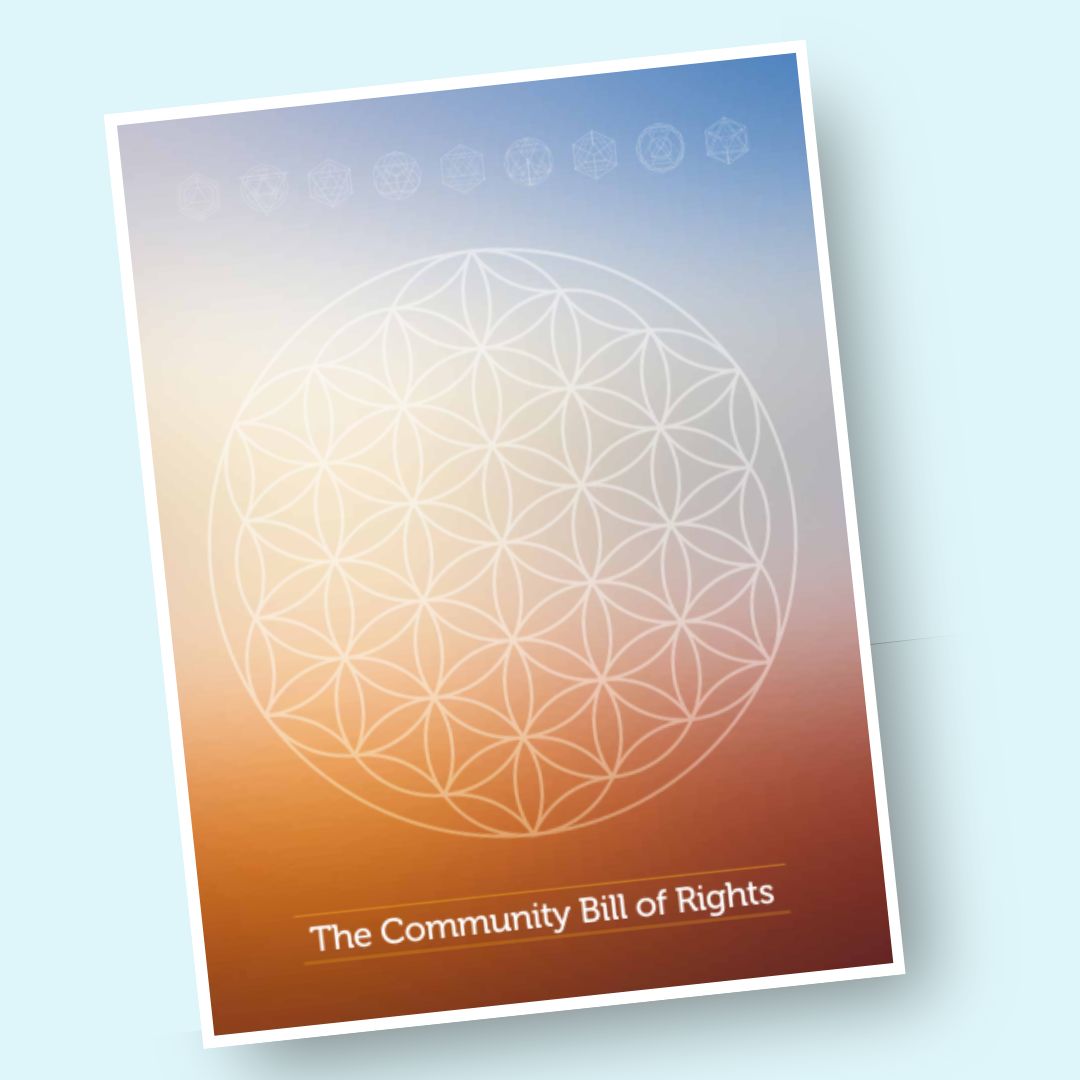 Featured Resource
Featured Resource
In partnership from FFI, sixteen community leaders across nine states coauthored this set of guiding principles for centering community, shifting power and healing systemic harms.
 Featured Resource
Featured Resource
How can we ensure that everyone has a fair shot at wellbeing? Utilize our Wellbeing Design Principles to turn the wellbeing framework into action.
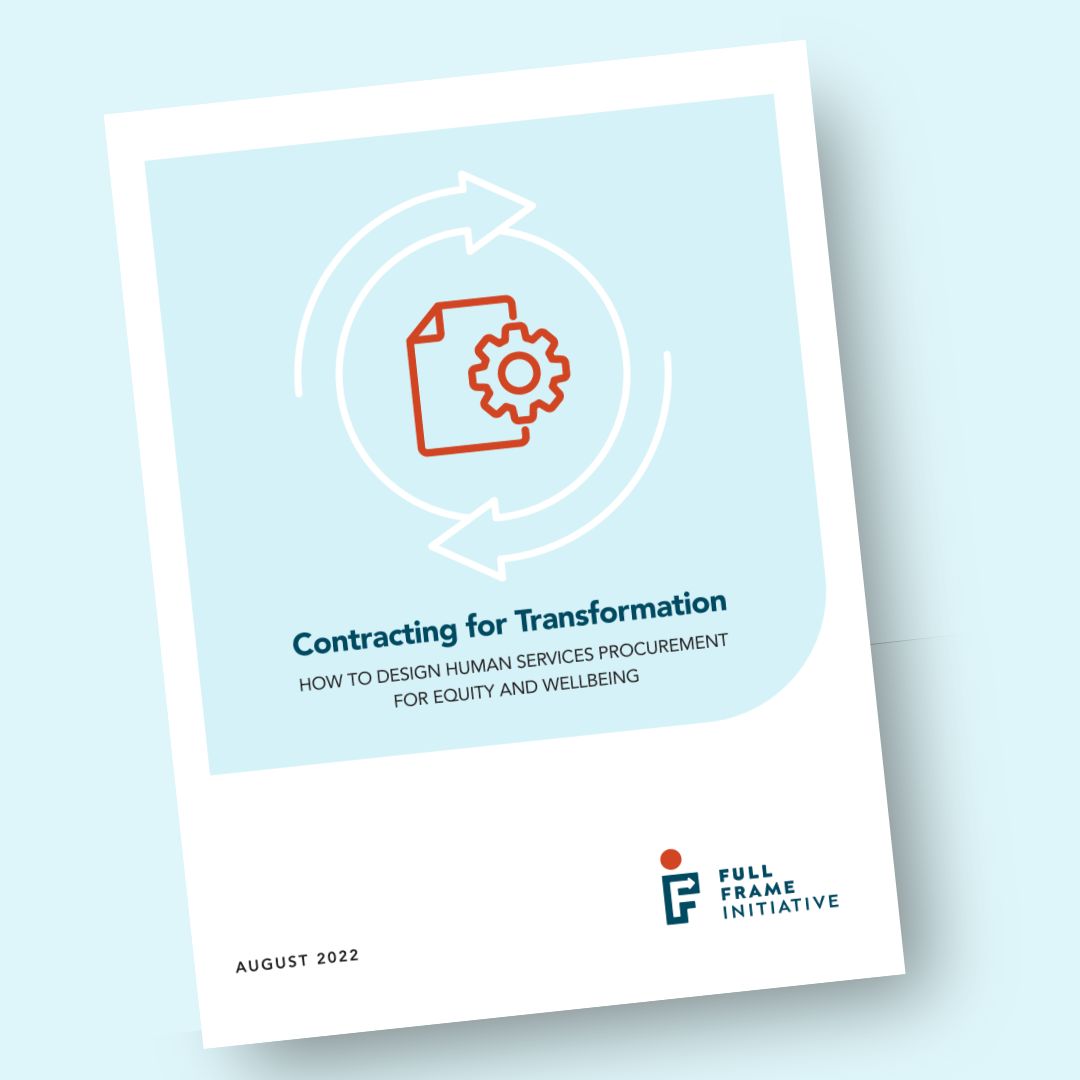 Featured Resource
Featured Resource
Our toolkit provides guidance for making procurement processes more equitable, and tangible tools for practical use such as score guides and questions for bidders.
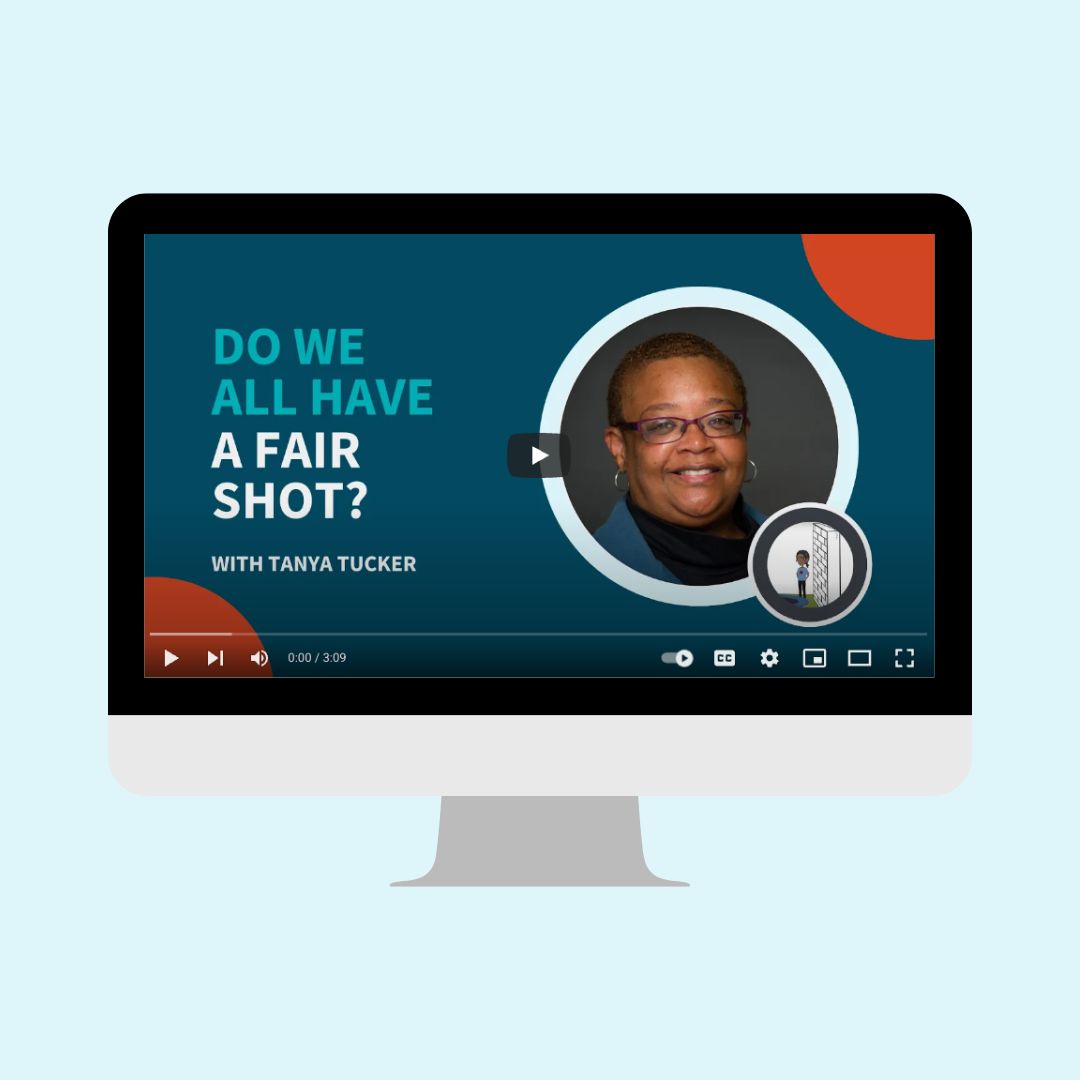 Featured Resource
Featured Resource
The U.S. should be a country where everyone has a fair shot at opportunity, and to thrive. But let's be real: that's not the case. Watch this video to learn why — and how we can change it.
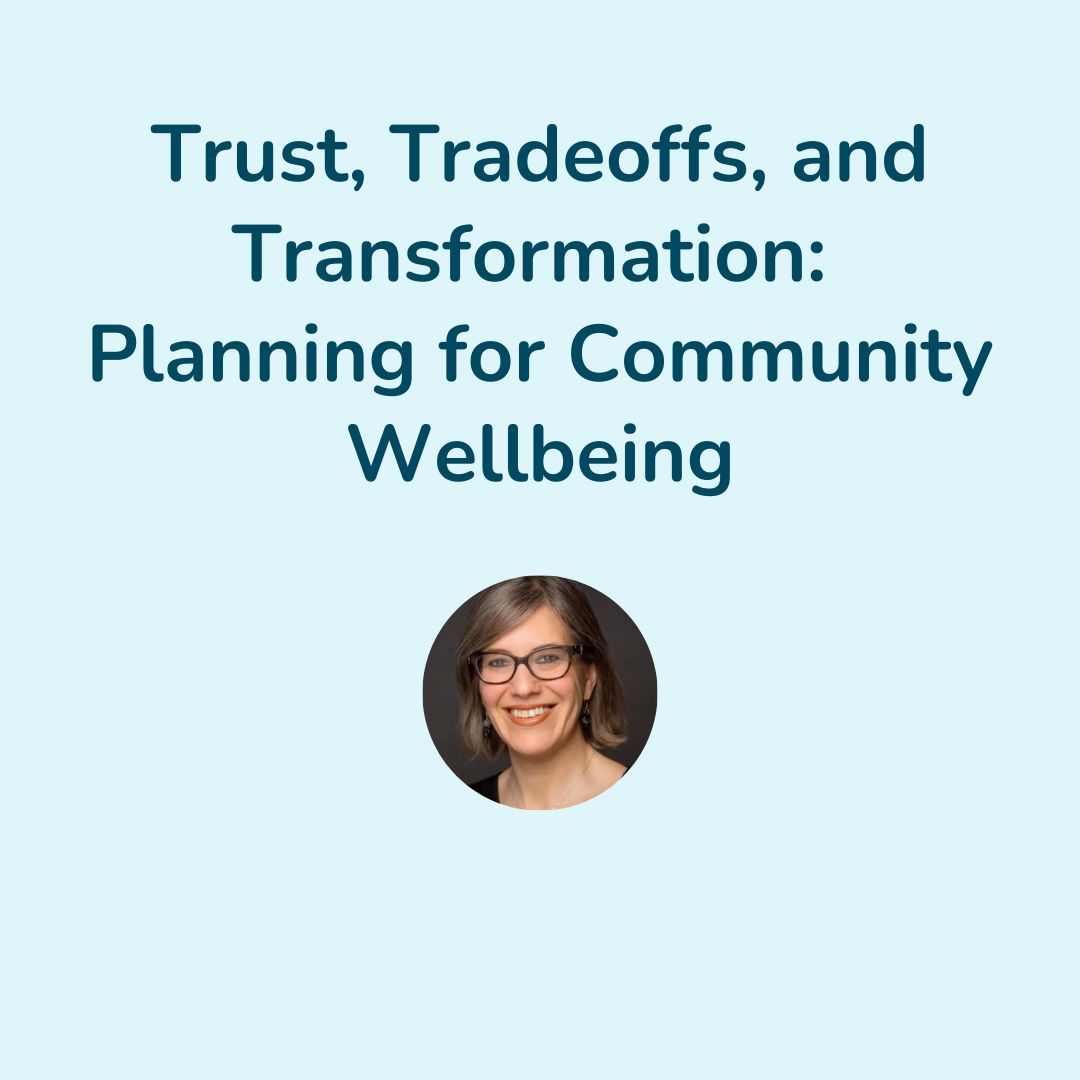
Katya Fels Smyth introduced WIATT (the Wellbeing Insights, Assets & Tradeoffs Tool) in a webinar for the American Planning Association, St. Louis.
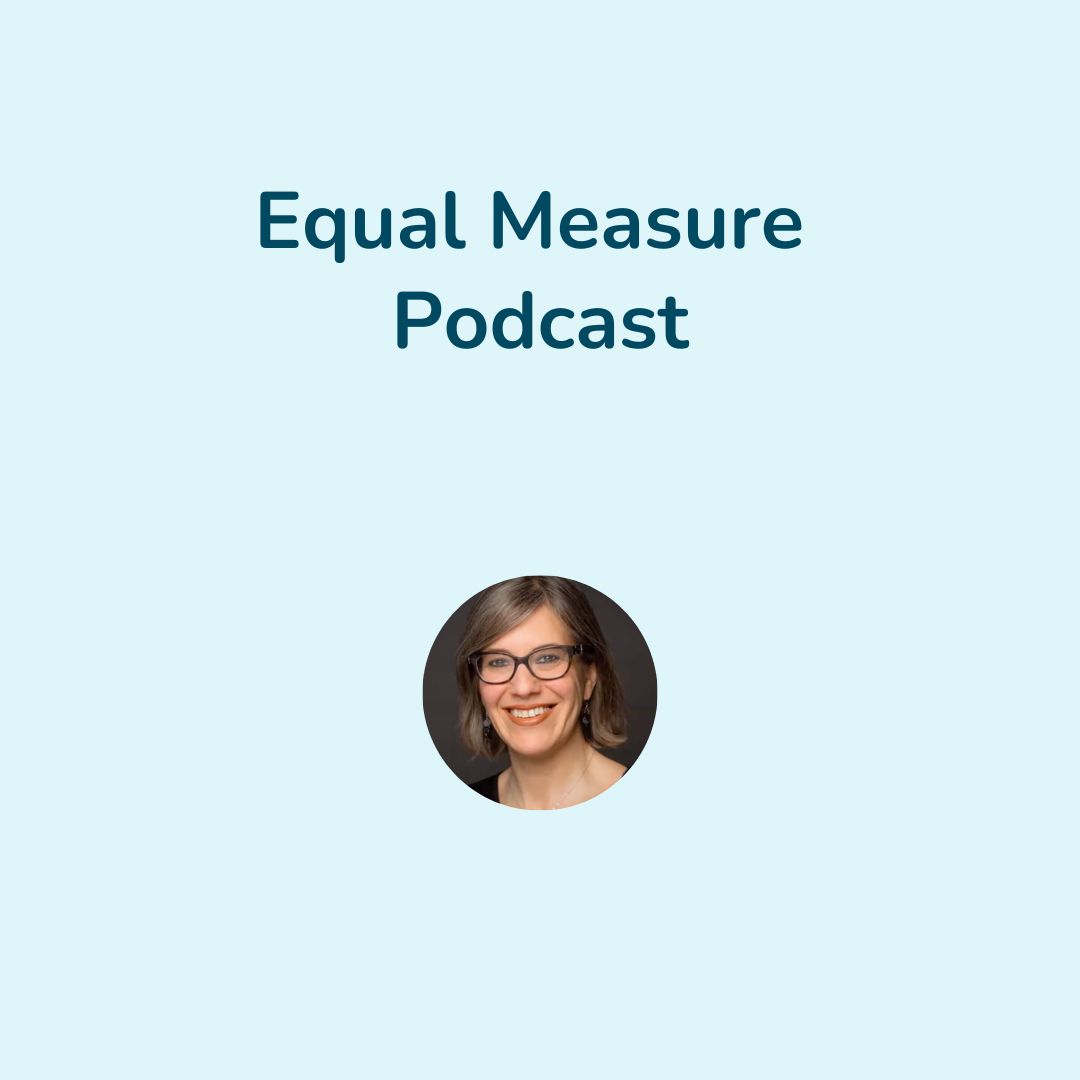
Katya sat down with Equal Measure President and CEO Leon T. Andrews, Jr. to discuss the five domains of wellbeing, the importance of sustained funding for systems change, and FFI’s closure this year.
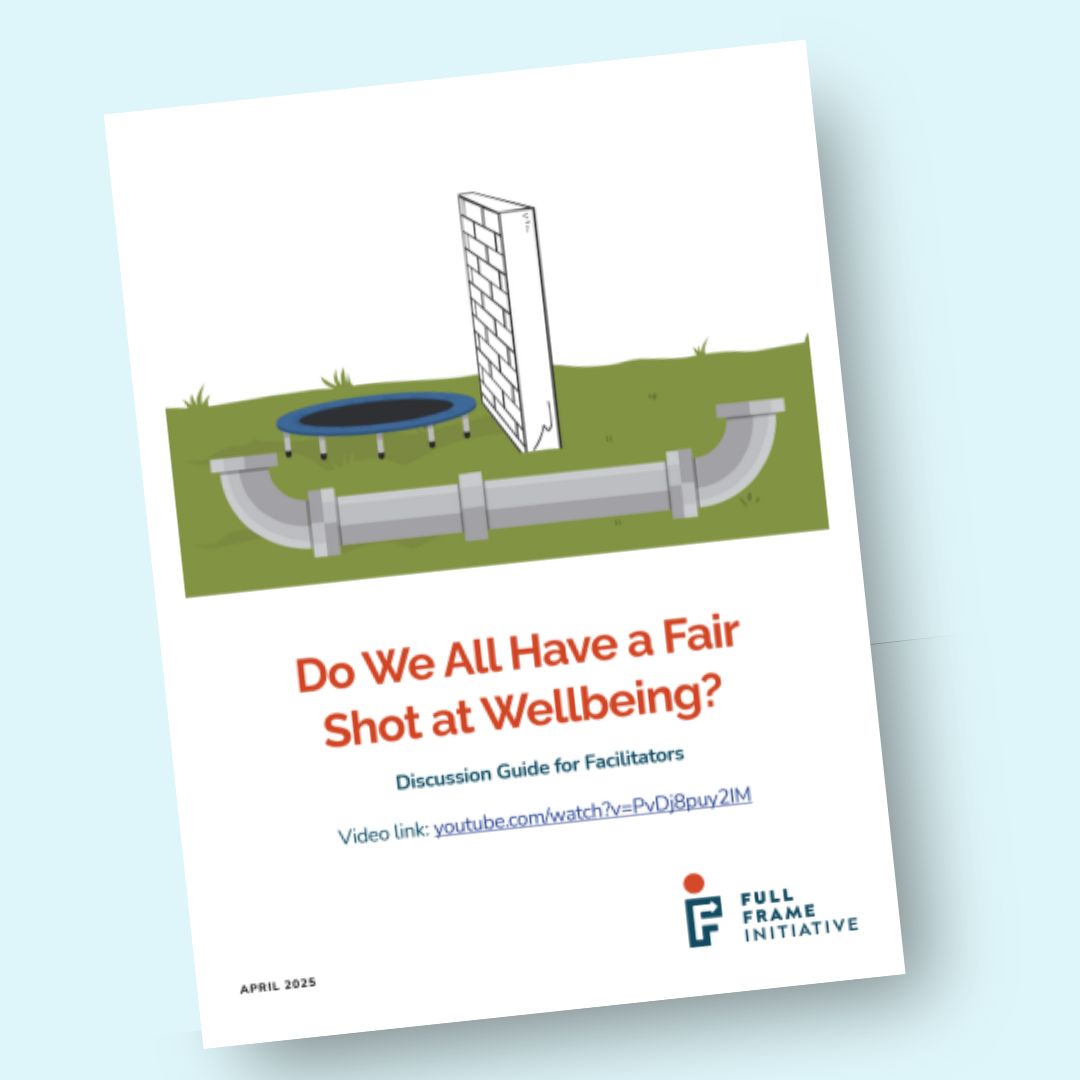
This discussion guide accompanies the video of the same name that introduces a powerful visual analogy for the systems that lead to unequal access to wellbeing.
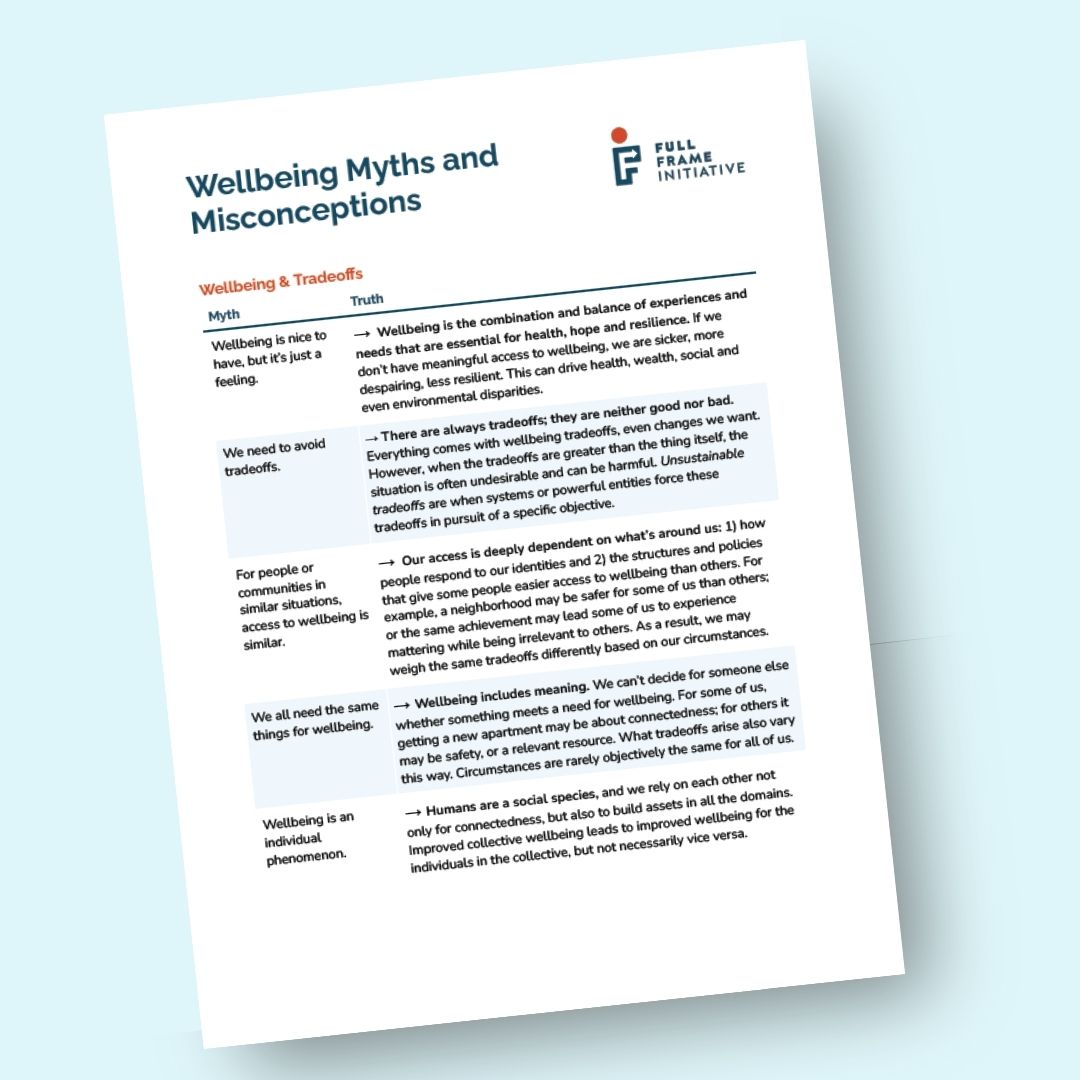
Wellbeing isn't just a nice to have and we break down the myths and misconceptions about wellbeing and tradeoffs.
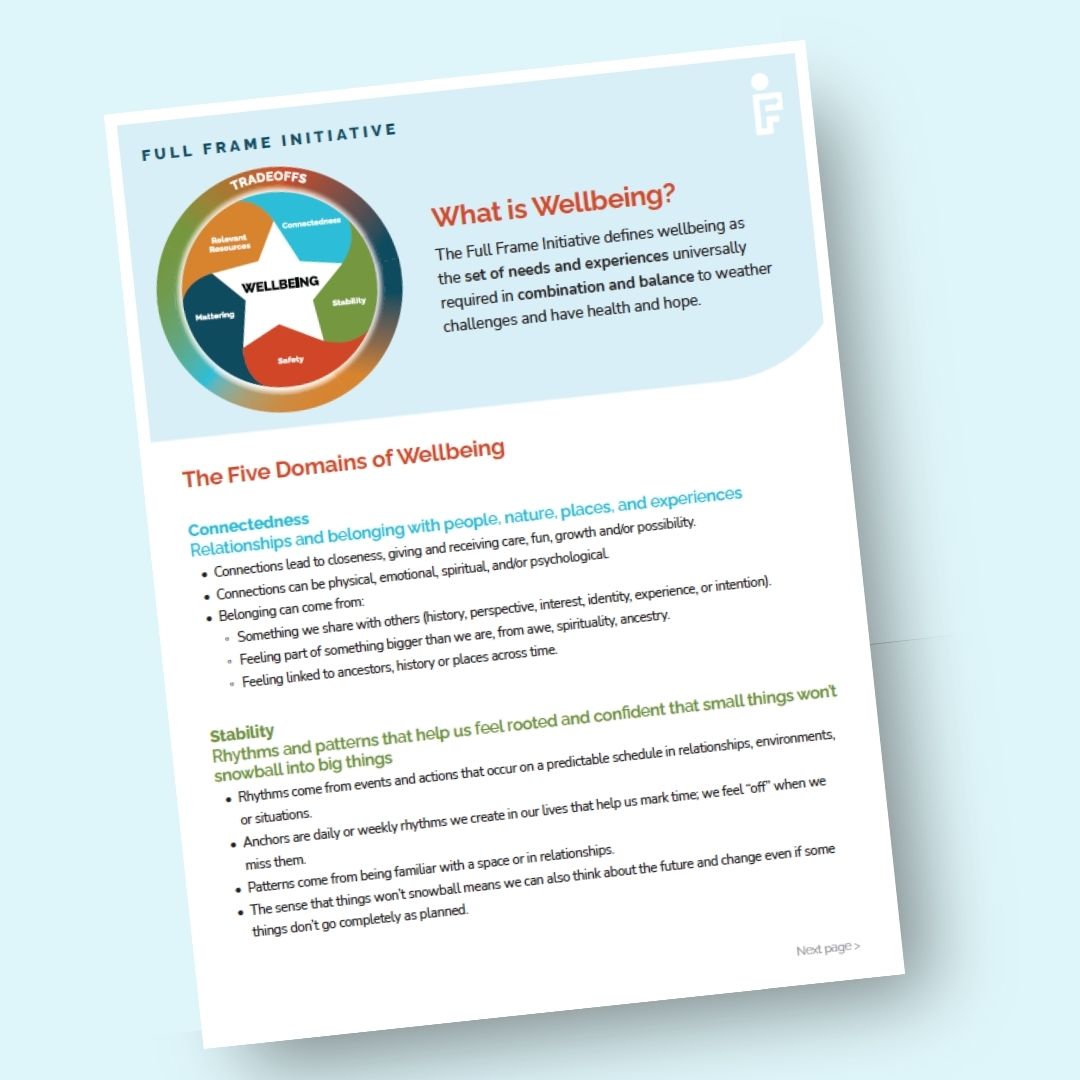
The Full Frame Initiative defines wellbeing as the set of needs and experiences universally required in combination and balance to weather challenges and have health and hope.
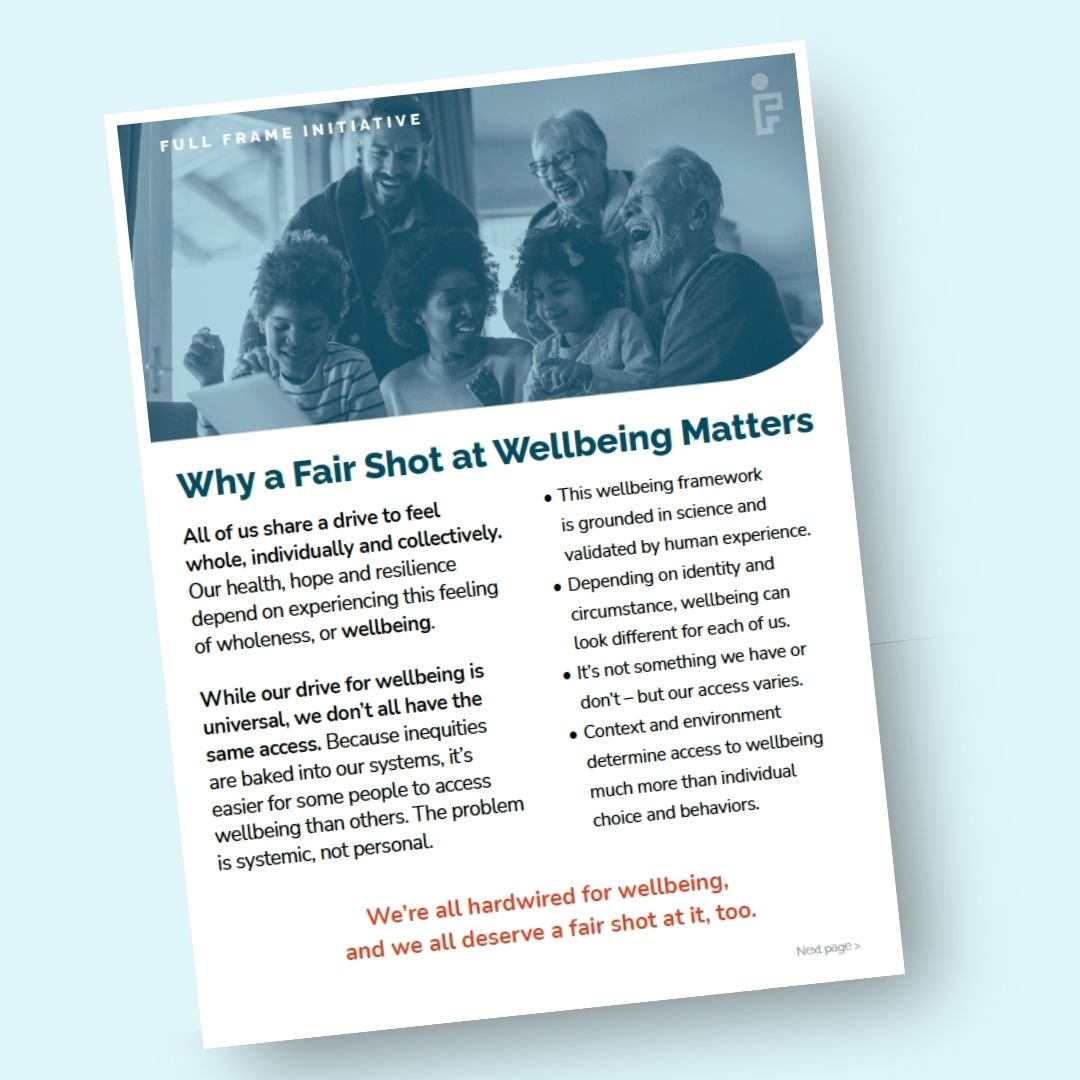
All of us share a drive to feel whole, individually and collectively. We're all hardwired for wellbeing, and we all deserve a fair shot at it, too. But we don't all have the same access.
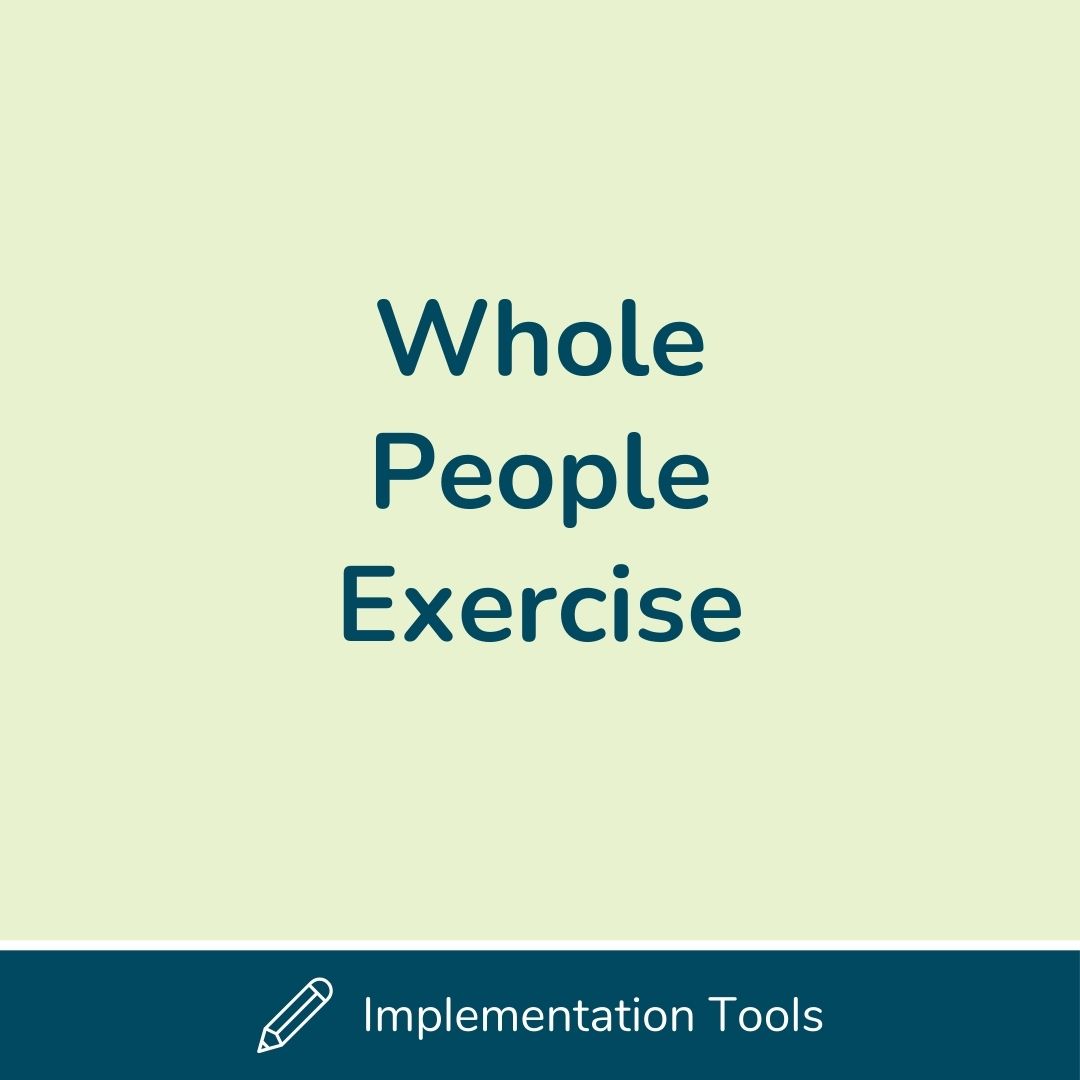
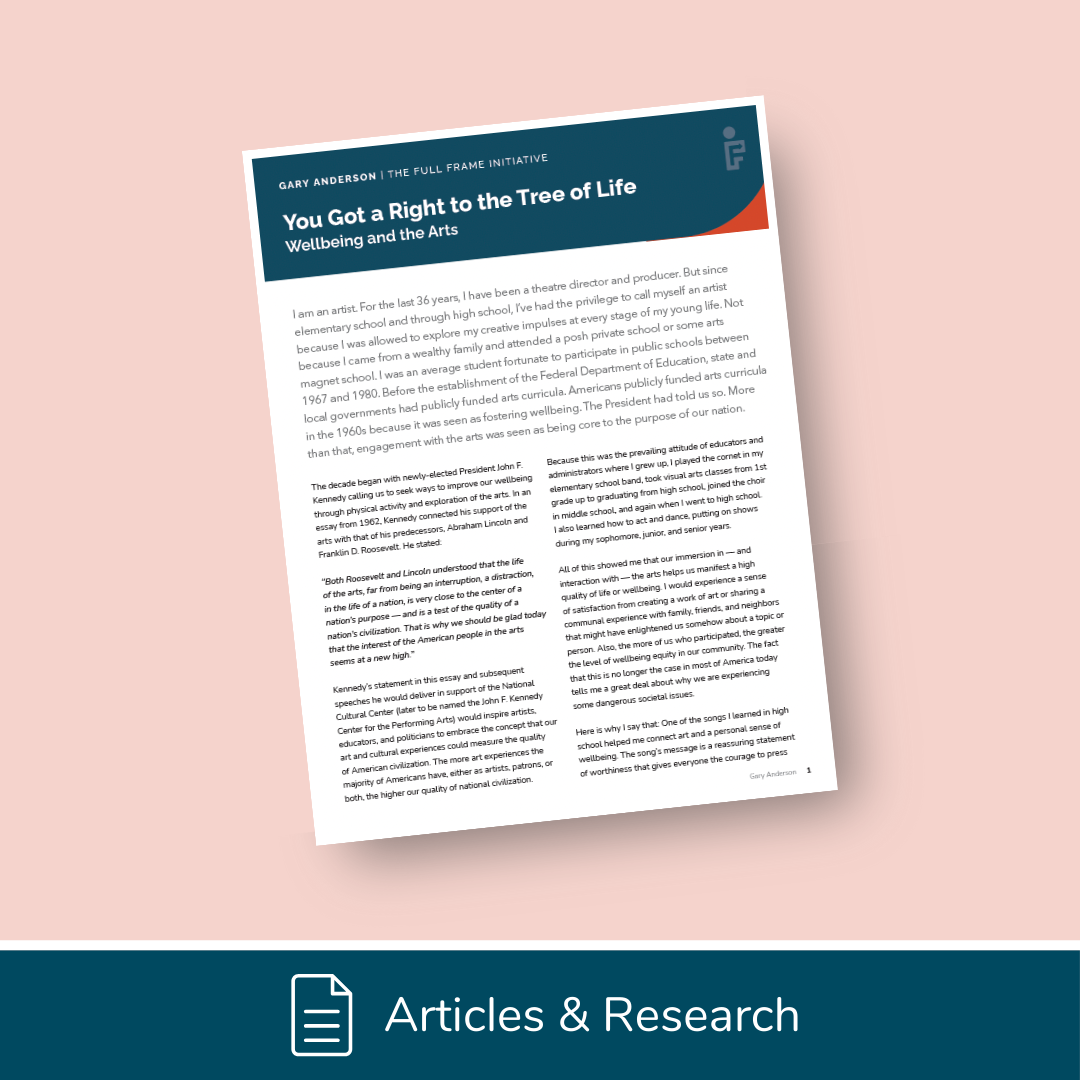
FFI Senior Fellow Gary Anderson, a theater director and producer with over 36 years of experience, makes a compelling case for centering the arts as a pathway to wellbeing and democracy.
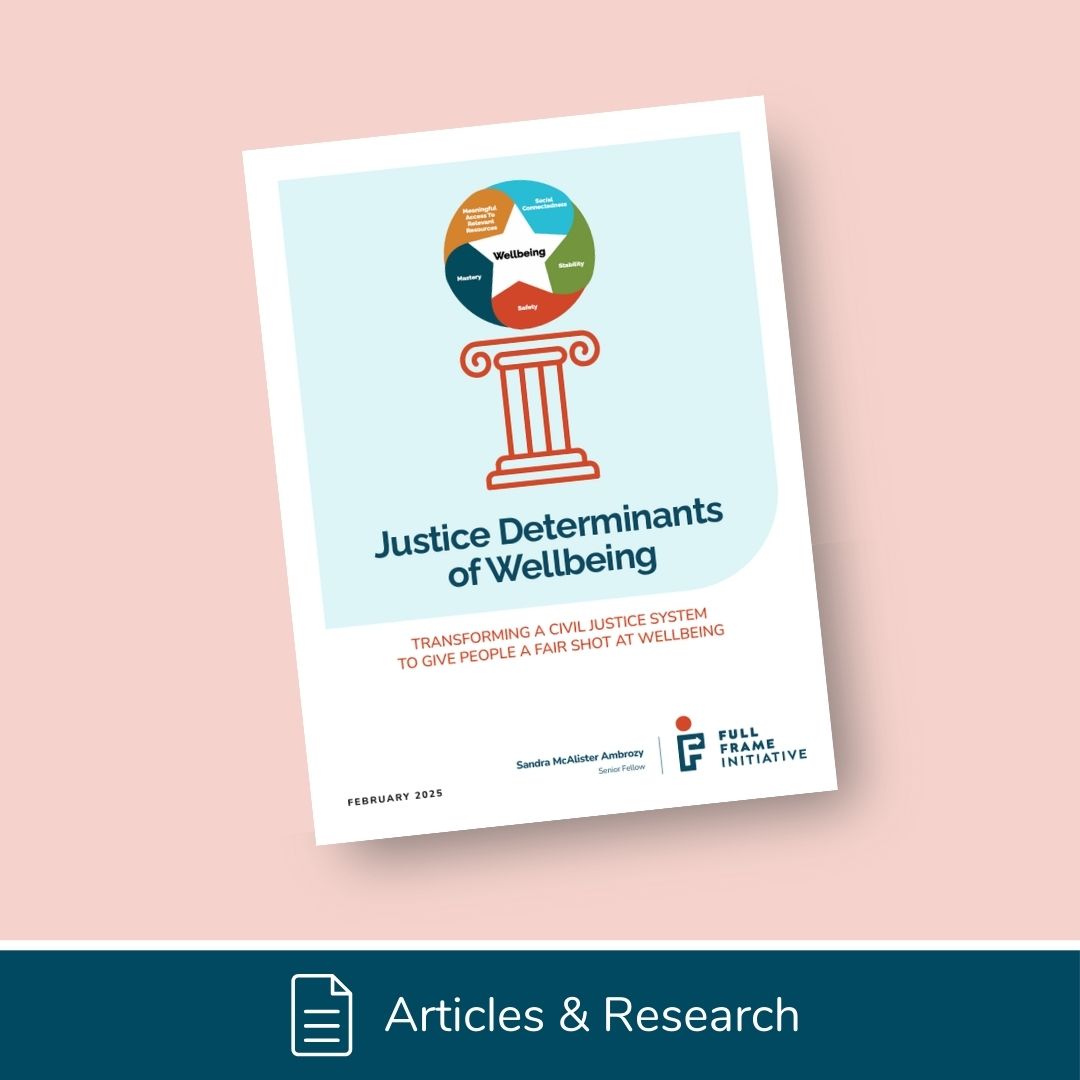
What would it look like to transform the civil legal system so it eliminates inequities instead of amplifying them? The Justice Determinants of Wellbeing outlines concrete changes that will push the civil legal system to a civic justice system rooted in wellbeing.
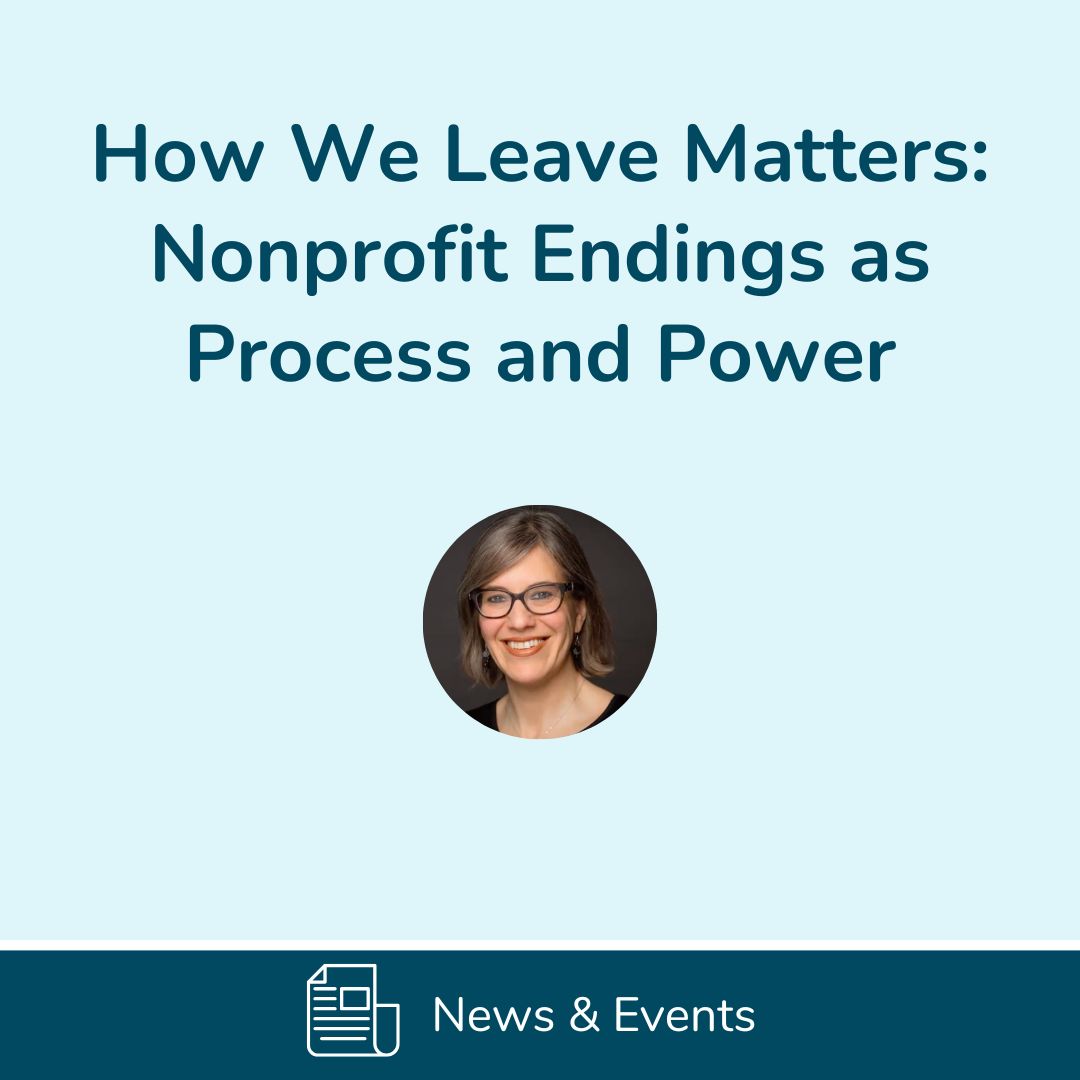
Katya Fels Smyth speaks at the Rx Foundation on "How We Leave Matters: Navigating Endings with Intention." Watch the recording on the Rx Foundation's website.

After 15+ years moving the US toward a country where everyone has a fair shot at wellbeing, the Full Frame Initiative has made the careful decision to wind down as an organization. Read the letter from FFI’s Founder & CEO Katya Fels Smyth about the decision to intentionally close in a way that reflects our values and minimizes risk of harm to our partners and communities. We are committed to ensuring the work takes on new life beyond our organization’s boundaries.
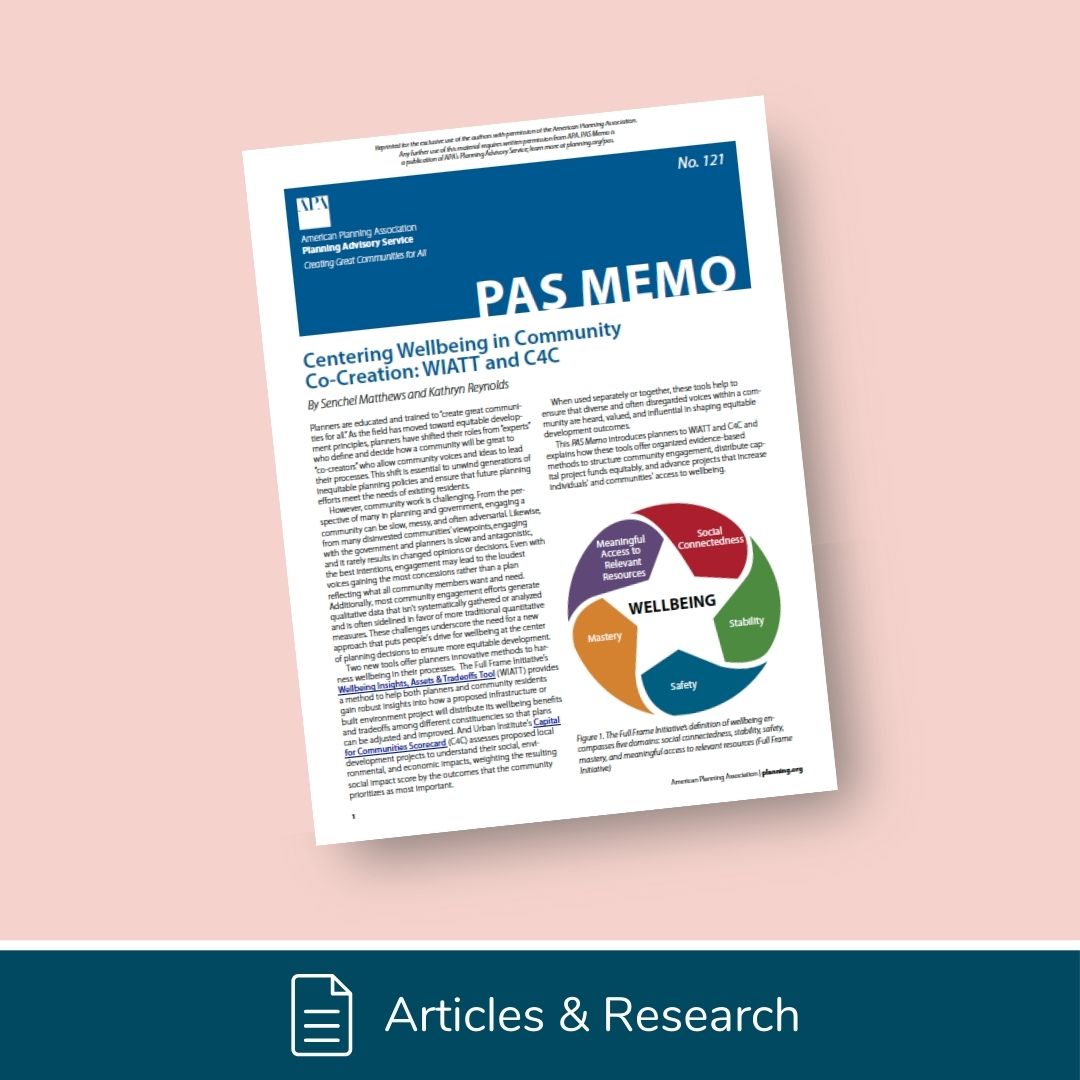
Senchel Matthews, FFI's former associate director of built environment, shares two innovative tools planners can use to harness wellbeing in community co-creation processes in American Planning Association's PAS Memo.